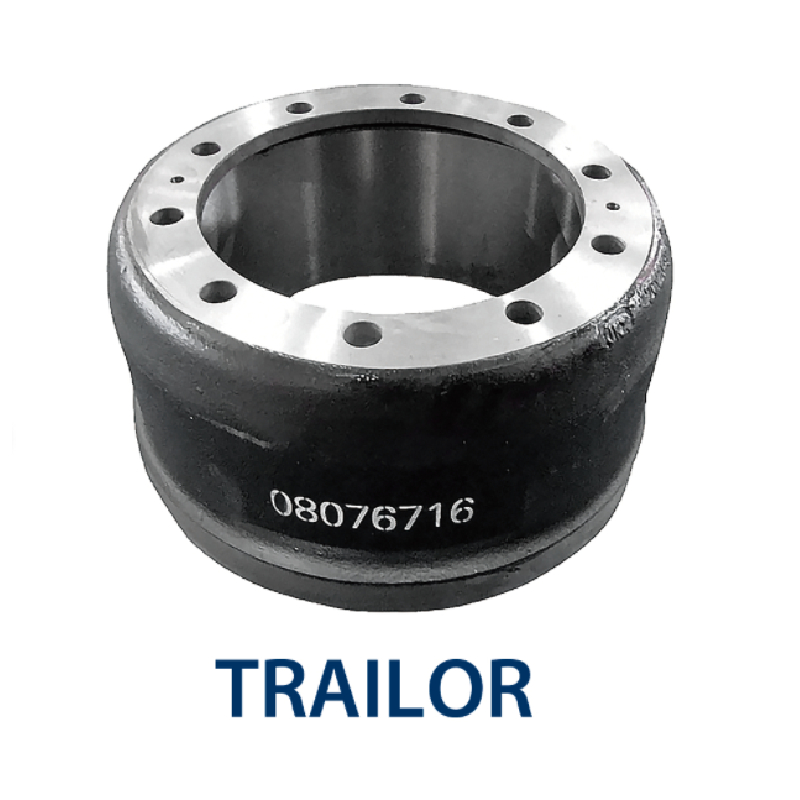Nov . 05, 2024 02:46 Back to list
brake drum repair
Understanding Brake Drum Repair A Comprehensive Guide
Brake systems are a crucial component of any vehicle, ensuring safety and functionality. Among these systems, the brake drum plays an essential role, especially in vehicles equipped with drum brakes. Over time, wear and tear can necessitate brake drum repair or replacement. In this article, we will explore the functions of brake drums, signs that indicate the need for repair, and the steps involved in the repair process.
What is a Brake Drum?
A brake drum is a cylindrical component that houses the brake shoes. When the driver presses the brake pedal, hydraulic pressure forces the shoes against the inner surface of the drum, creating friction, which slows down or stops the vehicle. This mechanism is prevalent in many older vehicles and in specific applications like trucks and buses due to its reliability and cost-effectiveness.
Signs That Your Brake Drums Need Attention
It's crucial to monitor your vehicle's braking performance and be aware of warning signs that may indicate a need for brake drum repair
1. Unusual Noises If you hear squeaking, grinding, or scraping sounds when applying the brakes, it is a strong indicator that your brake shoes or drums may be worn out.
2. Vibration If there is noticeable vibration or pulsation in the brake pedal while braking, it could suggest uneven wear or warping of the drum.
3. Longer Stopping Distances If your vehicle takes longer to stop than it used to, it may be time to check the brake drums.
4. Dashboard Warning Lights Many modern vehicles have diagnostic systems that will alert you to brake issues via warning lights on the dashboard.
brake drum repair

The Brake Drum Repair Process
Repairing brake drums can vary in complexity depending on the extent of the damage. Here’s a general process for brake drum repair
1. Inspection The first step involves a thorough inspection of the brake drum and associated components. This process may reveal whether the drum can be resurfaced or needs replacement.
2. Dismantling For repair, the brake drum must be removed. This entails lifting the vehicle, removing the wheel, and detaching the drum from the braking system.
3. Cleaning Once removed, the drum should be cleaned to get rid of dust, debris, and brake material. A clean surface helps to assess the drum and prepares it for any further work.
4. Resurfacing If the drum exhibits minor wear, it may be possible to resurface it. This process involves machining the drum to create a smooth surface, allowing for better contact with the brake shoes.
5. Replacement If the drum is too damaged or worn beyond safe limits, it will need to be replaced with a new or refurbished component.
6. Reassembly After addressing the drum’s condition, reassembly involves reinstalling the drum, brake shoes, and wheel. Ensure all components are tightened to the manufacturer’s specifications.
7. Testing Finally, once everything is reassembled, it's crucial to test the brakes to ensure everything is functioning correctly and the vehicle stops effectively.
Conclusion
Brake drum repair is an essential aspect of vehicle maintenance that should not be overlooked. Regular inspection and prompt attention to signs of wear can help maintain your vehicle's performance and ensure the safety of its occupants. If you suspect that your brake drums are not functioning optimally, seeking the assistance of a qualified mechanic is recommended. A well-maintained brake system is vital for safe driving, and understanding how brake drum repair works is the first step toward responsible vehicle ownership.
-
Volvo Brake Drum: OEM Quality, Optimal Safety
NewsAug.27,2025
-
Durable Brake Drum MAZ for Heavy Duty Trucks | High Performance
NewsAug.26,2025
-
FUWA: Premium Quality, Reliable Performance & Innovative Solutions
NewsAug.25,2025
-
Liza Brake Drum: Superior Quality & Performance for Safe Driving
NewsAug.24,2025
-
Iveco Brake Drum | Premium OE Quality for Daily & Eurocargo
NewsAug.22,2025
-
Your Brake Drum Man: Quality & Performance Parts
NewsAug.21,2025
